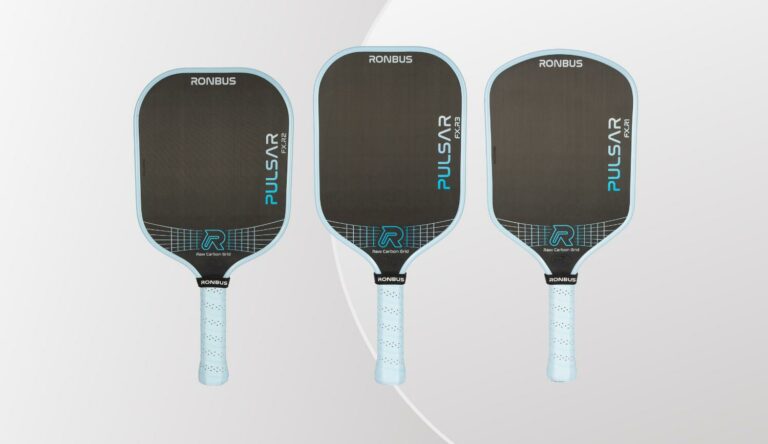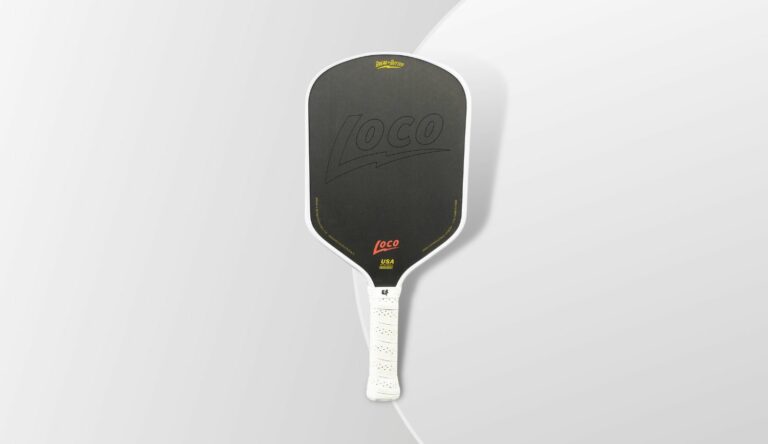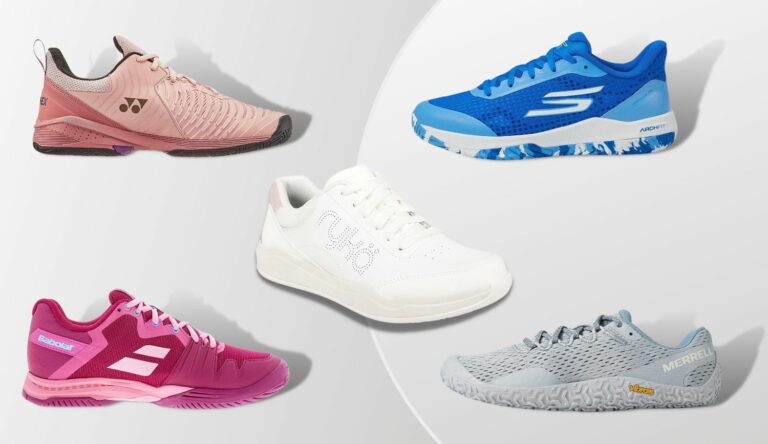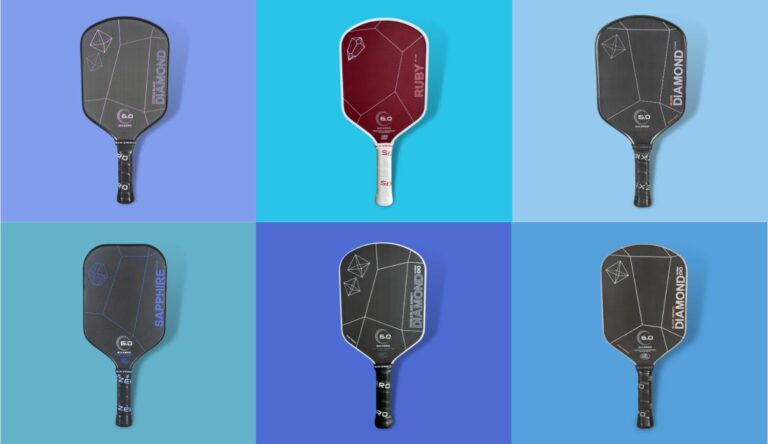When you start playing pickleball you quickly learn the importance of a good third shot drop. For many years, pickleball educators have been teaching that your third shot should almost always be a drop.
But pickleball is changing. There’s a new generation of players who are taught that both drives and drops can be effective third shot weapons. As a result, third shot drives are becoming more commonplace. What used to go against the grain is now the norm.
Pickleball pros and tennis converts, in particular, have pushed this evolution. They’re playing harder and faster, which means more drives, more often.
Love it or hate it, it’s essential for you to be able to drive the ball on a third shot to compete at a high level. You’ll need to have all shots in your quiver – the third shot drop, the third shot drive, and the third shot lob.
In this post, you’ll be taking a deep dive the third shot drive. You’ll learn the reasons for it, the times you’ll want to use it, and the ways to master it.
Let’s dive in.
Contents
Why are third shot drives becoming more common?
1. Good drives increase win percentages on the third shot
If you’re looking to win points on the third shot, the math favors drives.
The likelihood of hitting a perfect 3rd shot drive is about equal to executing a perfect 3rd shot drop. And a perfect 3rd shot drop is far less likely to win the point than a perfect 3rd shot drive is.
A good drive is far more punishing than a drop and harder to hit. The pros have recognized this and are starting to play more aggressively on their third shots rather than going defensive as often with drops.
2. A good 3rd shot drive can set up a strong 5th shot
A well-placed 3rd shot drive can be a winner itself, or it can help you win on the 5th shot. There’s an increased appearance of 3rd shot drive/5th shot drop combo in the game these days as a result.
With the 3rd shot drive, you apply added pressure by giving your opponent a more challenging ball to deal with, giving you the potential for more free points. And if they block it back, you’ll likely get an easier ball to drop on your 5th shot than you would have had on the 3rd.
You can drive on your 3rd against deep returns and then make your way halfway up to the kitchen, ready to hit a 5th shot drop that gets you the rest of the way up to the kitchen.
Good serve returns (2nd shots) usually have lots of spin on them, making them harder to hit drops with. But a hastily blocked 4th shot from your 3rd shot drive? Those are much easier to hit a 5th shot drop or putaway with.
The pros of the third shot drive
1. It keeps your opponents on their toes
We all know players who are entirely predictable with their 3rd shots. They drop their 3rd shots like clockwork. Their opponent can comfortably make their way up to the kitchen line and prepare for the incoming soft drop.
A player who instead mixes in punishing drives with their drop game keeps their opponents on edge. The opponent won’t be as carefree as they make their way to the NVZ line. They’re bracing for the possibility that they’ll have to stop abruptly and defend against a drive.
Throw some 3rd shot lobs into the mix, and a player goes from a predictable threat to an unpredictable threat.
2. The 3rd shot drive is easier and (usually) more forgiving than the 3rd shot drop
The 3rd shot drop is hard to master. It’s so easy to mistakenly hit a drop into the net or hit it/bounce it too high, making it attackable. An advantage to the drive is that it’s less demanding to execute effectively. A decent drive is easier to deliver for most players than an unattackable drop.
While a mishit 3rd shot drop is easy to punish, a mediocre 3rd shot drive is typically just blocked back, giving the opportunity to hit a better 5th shot.
Of course, you need to know when to hit a drive. Even a powerful, well-placed 3rd shot drive hit at the wrong time can be beaten with ease. Later in the article, I’ll go over when to hit your third shot drives.
3. You can pick on an opponent’s potential weakness
In addition to keeping an opponent guessing by mixing in drives, many players also simply struggle to handle drives.
In pickleball, it’s always good to test your opponent to see where their strengths and weaknesses are. If you find that your opponent does not do well with hard balls hit at them, then your 3rd shot drive game may be their Achilles heel and can help you win against them.
Playing a drive-heavy 3rd shot strategy can be particularly effective against some control-oriented players that are accustomed to a slower, dinking style of game. The speed and pace of the power game just overwhelm them.
4. You’re keeping up with the increased pace of the game
On that note, it’s important to stay current with the trends of the sport. Even if you prefer to dink and drop, you will play with partners that like to drive the ball, and you will play against opponents that do, too.
By developing your own 3rd shot drive game, you get a feel for the strategy and how to defend against it when faced with drives yourself. You’ll get good at seeing how to counter drives when you use them against skilled opponents.
With this skill, you’ll be able to set the pace with your own drives, but also not be at the whims of someone who tries to set the pace with hard drives against you.
When should you be hitting a third shot drive?
So we’ve talked about embracing the third shot drive to mix up your shot selection and be unpredictable. But when should you employ the third shot drive for the best results?
Some people try to mix up their shots as a percentage game. They’ll drop it 80% of the time and drive it 20% of the time. Or 70% drop, 30% drive.
But it should never be cut and dry like this. You should always utilize certain shots based on what your opponent is doing, not on pre-determined ideas. Other factors, like wind, should also be considered.
Here are the main factors you should take into account when deciding whether to drive your 3rd shot or not:
1. Drive against shallow returns
The biggest green light for a third shot drive is a short return. Driving on short returns gives a number of advantages.
- You can rush up to the ball and hit it in stride with power and momentum.
- They have less time to react to your drive due to the shorter distance between you.
When practicing your third shot drive, always get in the habit of capitalizing on soft, short returns. It’s a mistake to not punish these shots.
2. Drive against high-bouncing returns
Returns that bounce high are perfect candidates to be driven. With a high, arching bounce, it’s easier to keep your shot in because there’s less risk of sending your drive out of bounds due to the angle.
The high bounce allows you to take a downward angle on it, enabling you to more easily hit it towards their feet, or at least go over the net headed downward, making it less likely that they’ll be able to easily block or counterattack your drive.
As a rule of thumb, if the return is below my mid-thigh, I will drop or lob the ball rather than drive it. If the opponent can’t handle speed I will sometimes go for a body shot, but you run the risk of sending the ball out if they dodge it.
3. Drive when one or both of your opponents are backed up off the kitchen line
The most opportune time to drive the ball on your 3rd shot is when your opponents aren’t up at the NVZ line.
Some opponents stay at the baseline after they return a serve, others stay mid-court, and others are slow to get to the NVZ line. When this happens, I will drive my 3rd shot almost every time.
Oftentimes, one opponent in doubles will be quick to get to the kitchen while the other lags behind. In this instance, you can drive it to the opponent who’s back. Just watch out for the opponent at the kitchen line, as they may attempt to poach your drive.
4. Drive when your opponent can’t (or isn’t prepared to) handle drives
Sometimes your opponents are quick to get to the net, but they aren’t skilled at establishing themselves at the kitchen quickly. An unconfident player at the net is still a prime target for a drive.
You will find this often at the 4.0 level and below. Always test early on to see how your opponents handle drives. Look for weaknesses like unconfident body language at the net.
You won’t always get a winner against these opponents with your 3rd shot drives, but a solid drive will frequently result in a weak block from them that sets you or your partner up for a strong 5th shot.
When to avoid using the third shot drive
A good third shot drive is a potent weapon, but there are times that it will be counterproductive, and your usage of it will get you in a rut.
Here are times that you may want to avoid driving the ball on your 3rd shots:
1. Avoid driving against good, deep returns
The return (2nd shot) coming at you should always be the biggest factor that dictates your shot selection for the 3rd shot.
A deep return that’s low and has a good pace on it is typically a candidate for a third shot drop. Especially if your opponents both make their way up to the kitchen following the return.
A good rule of thumb I follow is that if the return is within 6 feet of the baseline, I will hit a 3rd shot drop. If it’s shallower than 6 feet, then I’ll strongly consider a drive if the ball has some bounce to it.
Always be flexible, though. Sometimes the return I get just doesn’t feel right to drop based on how I’m squared up to it. In those instances, I will drive the ball and attempt to ladder step up to the kitchen utilizing a 5th shot drop.
2. Avoid driving when both opponents are at the net
When both of your opponents are up at the net and prepared for your 3rd shot, it’s typically better to drop, or occasionally, lob them. Especially when they returned the ball deep to you.
Unless you have a very accurate drive with topspin, there’s a strong likelihood that your opponents will block your drive from the baseline and hit it right into the kitchen, out of your reach.
3. Avoid driving against high-level competition that can easily counter your drives
When playing higher-level competition (4.5+), it becomes much harder to leverage drives to your advantage.
Good players don’t feel pressured by drives. They will be able to drop them with ease into the kitchen, winning the point and nullifying any advantage you might have hoped to gain by driving the ball.
Until your drive is incredibly strong, you want to mostly lean into drop shots to give your strong opponents fewer opportunities to attack the ball.
How to hit better third shot drives
Perfecting your drive with intelligent placement and good mechanics will make you a much more dominant player.
A well-placed, hard, topspin heavy drive can drop just over the net and be hard to attack, even when the opponent is up at the line.
1. Know where to aim your third shot drives
When possible, drive at an opponent’s feet. You’ll also often want to drive down the middle of the court. When driving to the middle, it’s often effective to angle your drive slightly toward the opponent whose backhand is in the middle.
When driving directly at an opponent, it’s good to aim at their dominant shoulder to force a “chicken wing” shot.
Again, always be looking to test your opponents with placement. In doubles, usually, one player will have a weak side. It could be one player’s backhand that’s the weakest part of their game. If you find that weakness, exploit the chink in their armor.
Sometimes an opponent just doesn’t have the quickness to defend against body shots. In that instance, drive at their body (unless you’re in a low-level rec game, where etiquette might call for limiting body shots, i.e., “tagging”).
2. Keep your drives aimed low
Focusing on keeping drives low and just above the night is key. A high drive is more likely to go out or get effectively blocked for the opponent’s point.
This is the same advice you’d get with a third shot drop. On your 3rd shot, you’re at a disadvantage court positioning-wise, so you really don’t want your shot to be attachable.
3. Add topspin to your drives
You’ll have a huge advantage if you can learn to put topspin on your third shot drives, and groundstrokes in general. Converted tennis players tend to be very good at this.
Good topspin can make a low drive dip sharp and fast once it clears the net, making it unattackable and hard to defend against. This makes drives far less attackable, and thus, far safer.
Hitting with spin also allows you to clear the net with a larger margin of error because the ball will still get sucked down into the court. With topspin, even higher drives are more effective due to how they drop. This gives you more room to maneuver your shots and makes it less likely that you’ll drill the net.
4. Disguise your drives
It’s good form to not telegraph your drives before you hit them. Approach the ball with a neutral stance until the last moment, and then get in position for a quick, penetrating drive.
You want your opponents guessing whether you’ll drop or drive right up until the last second whenever possible.
5. Ensure that your grip is helping your drives
Finding a comfortable grip style that works for you is key to keeping your drives low and helping you impart spin on the ball. I find that a continental grip with my wrist locked back throughout the swing helps with my consistency.
Turning the paddle in my grip more toward the ground helps a lot with topspin, but it takes adjustment to keep the ball from going too low and hitting the net.
Don’t be afraid to find what works for you. Drilling your drives with grip adjustments in mind really helps to solidify what works for you.
In conclusion
- Third shot drops are important, but so are third shot drives.
- Stay in front of your 3rd shot always. Don’t creep in and get burned by a deep return.
- Mix up your drops with drives and lobs. Keeping flexible with your shot selection is essential.
- Know when the right time to drive is and practice it often until you’re confident.
- Be ready to capitalize on weak blocks to your 3rd shot drives and punish your opponent with a strong 5th shot.
How do you feel about the increased appearance of the 3rd shot drive/5th shot drop in favor of the 3rd shot drop? Are you seeing this when you play? Are you incorporating it into your own gameplay? Let us know in the comments.






